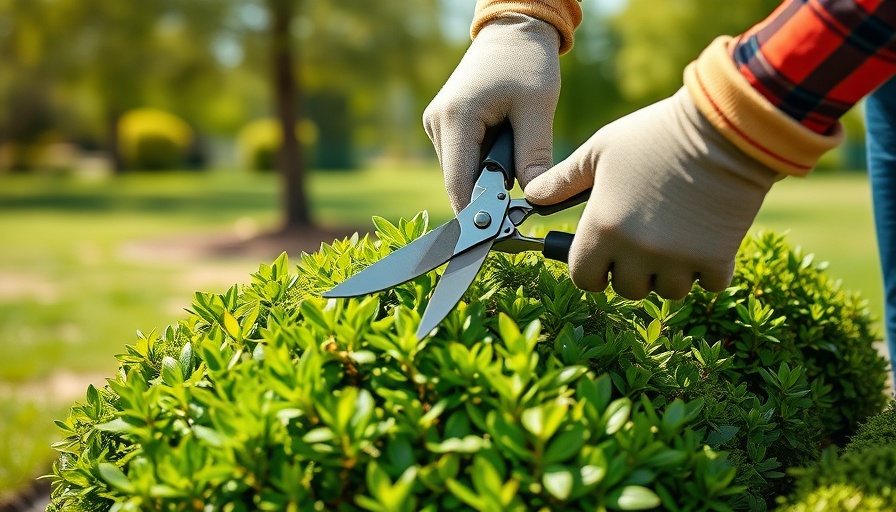
Unlock the Beauty of Your Garden: Pruning Boxwood Shrubs Effectively
For many homeowners and garden enthusiasts, boxwood shrubs (Buxus spp.) can be likened to a versatile canvas waiting to be shaped into beautiful landscapes. But, just like a piece of wood that can be whittled into something impressive, a boxwood left unattended can quickly become overgrown and perhaps even unrecognizable.
These plants are known for their ability to grow surprisingly fast—up to 12 inches a year. With such growth, it's essential to stay ahead of the game to maintain the sophistication and health of your boxwoods. In this guide, we explore the critical elements of pruning boxwood shrubs, creating a masterpiece that not only enhances garden aesthetics but also promotes plant health.
Why Prune Boxwood Shrubs?
Before you grab your pruning shears, understanding the rationale behind pruning is crucial.
Aesthetic Appeal
Picture an immaculately styled hedge, perfectly round, square, or perhaps even sculpted into a beloved shape—a feat made possible through pruning. An unkempt boxwood, much like wild hair, can detract from the visual appeal of your garden. Pruning enables you to take control of these plants, guiding their growth into shapes that enhance your outdoor space.
Health Benefits
Beyond their visual allure, boxwoods need trimming for their health. Overgrown shrubs hinder airflow, creating damp environments that welcome pests and diseases. By regularly pruning, you ensure better air circulation, reducing the chances of your shrub hosting unwelcome guests. Regular maintenance keeps your boxwood vibrant and responsive to the changing seasons.
When is the Right Time to Prune Boxwoods?
Timing is vital when it comes to pruning boxwoods. The late winter or early spring months just before the growth spurt is considered ideal. Learning to identify the subtle signs of growth can be your best ally. Targeting these windows not only keeps the shrubs looking their best but also allows new growth to flourish in the season ahead.
How to Prune Your Boxwood Shrubs: Step-by-Step
Let’s delve into the practical aspects of pruning these resilient shrubs:
Gather the Right Tools
You don’t need a fancy toolkit—basic gardening shears and gloves will work wonders. For larger boxwoods, consider using hedge trimmers for a clean cut. Make sure your equipment is sharp and disinfected to prevent the spread of any diseases.
Assess Your Boxwood
Before cutting, step back and evaluate your shrub from different angles. Identify areas that need tackling—those uneven sides or excessive interior branching that an eye for detail can catch. This awareness will guide your pruning process.
Start Pruning
Begin with the outer edges, cutting back any overgrown branches to the desired shape. Always make cuts at a slight angle to promote new growth and reduce damage. If you're looking to sculpt your boxwood into a special shape, remember that less is more; gradual adjustments create a more natural look over time.
Clean Up
Don’t forget to clear away clippings to promote healthy growth around your boxwoods. After pruning, inspect the shrub for any signs of disease that could be lurking amongst the branches.
Practical Tips for Successful Boxwood Maintenance
Some practical hacks for boxwood care include:
- Regular checks post-pruning: Inspect for diseases or pests and take action if required.
- Fertilization: A balanced fertilizer appropriate for boxwoods will enhance their growth and resilience.
- Watering: Ensure regular watering, especially during dry spells, to keep your shrubs hydrated without causing waterlog.
Creating Your Boxwood Shenanigans
Pruning boxwoods isn't just about cutting back foliage; it's about encouraging a thriving, cohesive outdoor ensemble. By undertaking this responsible approach, you not only beautify your surroundings but foster a petition for wildlife - all critical aspects of sustainable gardening.
Consider exploring planting pest-resistant plants around your boxwoods to naturally avert bugs and diseases. Moreover, coupling your efforts with DIY gardening projects can lead to vibrant herbal companions to your Buxus specimens.
Embrace Your Gardening Journey
As you embark on your boxwood pruning journey, remember that the act itself reflects broader life lessons—patience, planning, and nurture lead to healthy growth, whether it’s in your garden or personal endeavors.
Ready to transform your garden into a masterpiece? Take the plunge with your first boxwood pruning adventure this season. Share your results and see how local urban farming communities embrace the practice—it’s your space, claim it!
 Add Row
Add Row  Add
Add 




 Add Row
Add Row  Add
Add 

Write A Comment